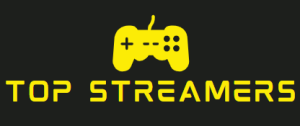In the dynamic world of live streaming, delivering high-definition (HD) content on Twitch can significantly enhance viewer experience and boost your channel’s growth. As more viewers demand crisp visuals and smooth gameplay, understanding how to Start HD Twitch content becomes essential for aspiring and current streamers alike. This article will walk you through the key aspects of setting up your Twitch stream in HD, from hardware and software requirements to best practices for streaming quality.
Why Stream in HD?
Before diving into the technicalities, it’s important to grasp why HD streaming matters. HD content offers sharper, clearer images and better color accuracy compared to standard definition streams. This quality increase improves viewer engagement, as audiences are more likely to stay and interact when the stream looks professional. Moreover, HD streams showcase your gameplay, creativity, or content more effectively, making your channel stand out among thousands of others.
Understanding Twitch’s Streaming Quality Limits
Twitch supports multiple streaming resolutions, but the most common HD standards are 720p (1280×720 pixels) and 1080p (1920×1080 pixels). While 1080p offers the highest clarity, it also demands more from your internet connection and computer hardware. Twitch’s default bitrate cap for non-partnered streamers is around 6000 kbps, which aligns well with 1080p at 60 frames per second (fps) but requires a strong upload speed.
If you’re new to streaming or have a modest setup, starting with 720p at 30 or 60 fps can be a great balance between quality and performance.
Essential Hardware for HD Streaming
Powerful PC or Console
For PC streaming, your system must handle running the game and the streaming software simultaneously. A modern multi-core processor (Intel i5 or Ryzen 5 and above), at least 16GB of RAM, and a dedicated graphics card (NVIDIA GTX 1660 or AMD equivalent and higher) are recommended. For consoles like Xbox Series X or PlayStation 5, Twitch streaming apps are optimized, but consider using a capture card for additional control.
Reliable Internet Connection
Upload speed is crucial. For HD streaming, you’ll need at least 6 Mbps upload speed for 1080p60 streaming. For 720p60, around 3-4 Mbps is adequate. Use wired Ethernet connections over Wi-Fi for stability and lower latency.
Quality Webcam and Microphone
To complement your HD video stream, invest in an HD webcam (1080p or better) and a clear microphone. Viewers appreciate high-quality audio and a clear image of the streamer, which adds to the overall experience.
Software Setup for HD Twitch Streaming
Streaming Software
Popular tools include OBS Studio (Open Broadcaster Software), Streamlabs OBS, and XSplit. These platforms allow you to customize stream resolution, bitrate, and frame rate. OBS Studio is highly flexible and free, making it ideal for most streamers.
Configuring Stream Settings
Within your streaming software, set the base (canvas) resolution to your monitor’s native resolution, usually 1920×1080. For output (scaled) resolution, select 1280×720 or 1920×1080 based on your hardware and internet capabilities.
Set the video bitrate to a value Twitch supports. For 1080p60, 6000 kbps is typical. For 720p60, 3500 to 5000 kbps works well. Frame rate can be set to 30 or 60 fps — higher frame rates require more power but provide smoother motion, especially important for fast-paced games.
Encoder Settings
Use hardware encoding if available (like NVIDIA NVENC or AMD VCE) to offload video encoding to your GPU instead of your CPU, reducing system strain. Alternatively, software encoding (x264) uses the CPU and can provide higher quality but at a cost of more processing power.
Optimizing Your Twitch Stream Quality
Test Your Stream
Before going live to a large audience, run private test streams to verify your settings. Check for dropped frames, buffering, and audio-video sync issues. Adjust bitrate or resolution if needed.
Manage CPU and GPU Usage
Monitor your system’s resource usage during streaming. Close unnecessary applications to free up resources. Overheating or excessive usage can cause frame drops or crashes.
Lighting and Background
Good lighting enhances your webcam quality, making your HD stream more professional. Use soft, even lighting and declutter your background for a cleaner look.
Engage with Your Audience
While HD content is visually appealing, the best streams also involve lively interaction. Use Twitch’s chat and alerts to keep viewers engaged and build a community.
Troubleshooting Common HD Streaming Issues
Buffering or Lagging
Often caused by insufficient upload bandwidth or unstable internet. Lower the bitrate or switch to a wired connection.
Frame Drops
Could be due to hardware limits or encoding overload. Try reducing frame rate or resolution.
Audio-Video Sync Problems
Check the audio delay settings in your streaming software and adjust accordingly.
The Benefits of Streaming in HD
By providing viewers with HD content, you project a more professional image, improve viewer satisfaction, and increase the chances of gaining followers and subscribers. HD streaming allows content creators to showcase fine details, whether it’s vibrant game graphics, intricate art, or high-quality tutorials.
Final Thoughts
Starting HD Twitch content is a powerful step toward elevating your streaming career. While it requires investment in hardware, bandwidth, and some technical know-how, the results are worth it. HD streaming attracts more viewers, enhances engagement, and helps you build a loyal community on Twitch. Begin by optimizing your setup for your current resources, then gradually upgrade to full HD streaming as you grow. Consistency, quality, and interaction are the pillars of successful Twitch streaming — and HD content is a key part of that foundation.
